Algorithmic hypomnêmata¶
Hypomnêmata describes a practice of dealing with text that serves one’s own self-constitution. We look at this practice, which can be dated back at least 2000 years, from the perspective of algorithmic word processing (and self-constitution).
The following is a transcript of a presentation given by Mattis Kuhn.
Identity through embedding (space)¶
Ancient times: identity was largely externalized, thus related to space and environment. (Holling & Kempin)
Odysseus: »destroyer of cities, son of Laertes and native of Ithaca«. (People’s ID was spatial.)
The base model of our self is spatial: a body embedded in its environment. (System, border.)
Model/ mental representation¶
Model = mental representation of our environment and us.
Models are simplifications. Necessary to deal with an otherwise too complex surrounding.
We create more complex and abstract models (systems, concepts like the I/ Self, theories) through hierarchies, heterarchies, tools like language.
Models enable us to create things that haven’t been in our surrounding.
Extended mind/ extended self¶
The extended mind thesis assumes that not all cognitive events take place in the body or even in the brain. (Clark & Chalmers)
Cognition is extended to body and environment, in feedback loops these interact and generate cognition.
Examples: slime mold, Hänsel & Gretel, smartphone, maps
Cognitive extensions enable us to create more complex models, more complex cognitive extensions, etc.
“environmental engineering is also self-engineering” (Clark)
Language as cognitive extension¶
Language “serves as a tool whose role is to extend cognition in ways that on-board devices cannot.” (Clark & Chalmers)
Language offers a new way of thinking. (Structures, logic, instructions, questions.)
Algorithms = cognitive extensions.
Library of Babel.
Quick review¶
Base model of our self is spatial.
We develop more complex models.
Our cognition and our self are extended into our environment.
Language is a cognitive extension.
We can shape our self through language (natural language, algorithms).
Michel Foucault: hypomnêmata¶
Constituting the mental representation of the self through the practice of hypomnêmata.
“Hupomnemata, in the technical sense, could be account books, public registers, or individual notebooks serving as memory aids. […] One wrote down quotes in them, extracts from books, examples, and actions that one had witnessed or read about, reflections or reasonings that one had heard or that had come to mind. They constituted a material record of things read, heard, or thought, thus offering them up as a kind of accumulated treasure for subsequent rereading and meditation.”
It is more than a memory. It’s “a material and a framework for exercises to be carried out frequently: reading, rereading, meditating, conversing with oneself and with others.”
The purpose of this practice is “nothing less than the shaping of the self.”
Points to the importance of writing. Reading is necessary to broaden your view, but without writing it’s possible “to forget oneself”.
We should not just consume, but make it a “part of us”, thus influence our actions through the hypomnêmata.
Niklas Luhmanns Zettelkasten¶

Personal cognitive extension
“Talking” with the Zettelkasten
Luhmann insists he can’t write books without his Zettelkasten
Knowledge through order/ organisation
“Im Zettelkasten ist ein Zettel der das Argument enthält, das die Behauptungen auf allen anderen Zetteln widerlegt. Aber dieser Zettel verschwindet, sobald man den Zettelkasten aufzieht. D.h. er nimmt eine andere Nummer an, verstellt sich und ist dann nicht zu finden. Ein Joker.” (Luhmann, Z. 9/8j)
Algorithms writing us¶
Filter bubbles, recommendation systems.
Quantification/ quantified self.
Affective computing.
Formalization. Wird die Kunst digital?
Interfaces influence our behaviour. Olia Lialina: end-to-end, p2p, my to me
Algorithmic Decision Making.
Algorithms shape our environment which shapes us.
(Writing with DNA, mind upload.)
Artistic projects¶
Jaakko Pallasvuo: Soft Body Goal (2017)
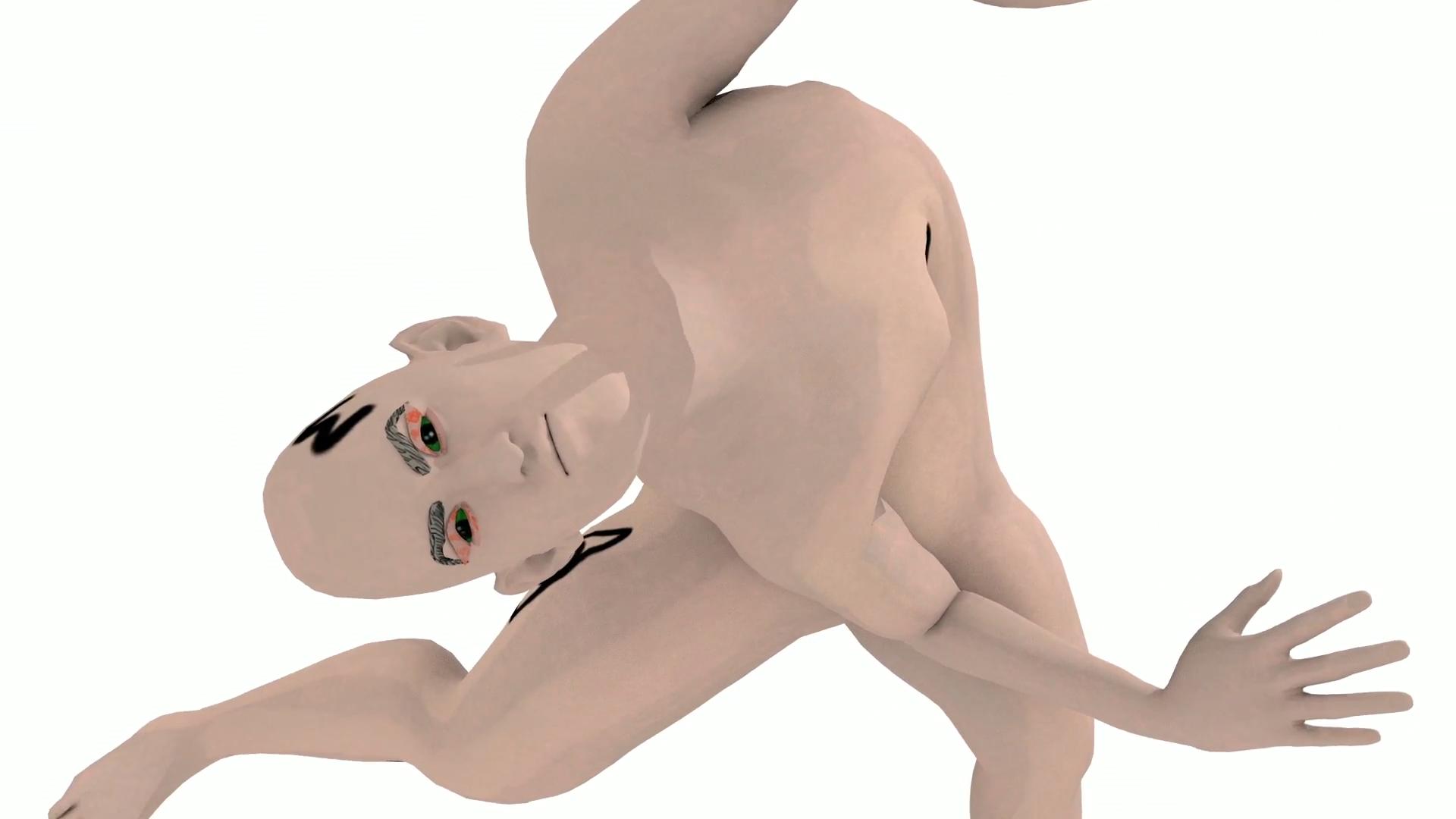
Jasper Rigole: 500 letters (2010)
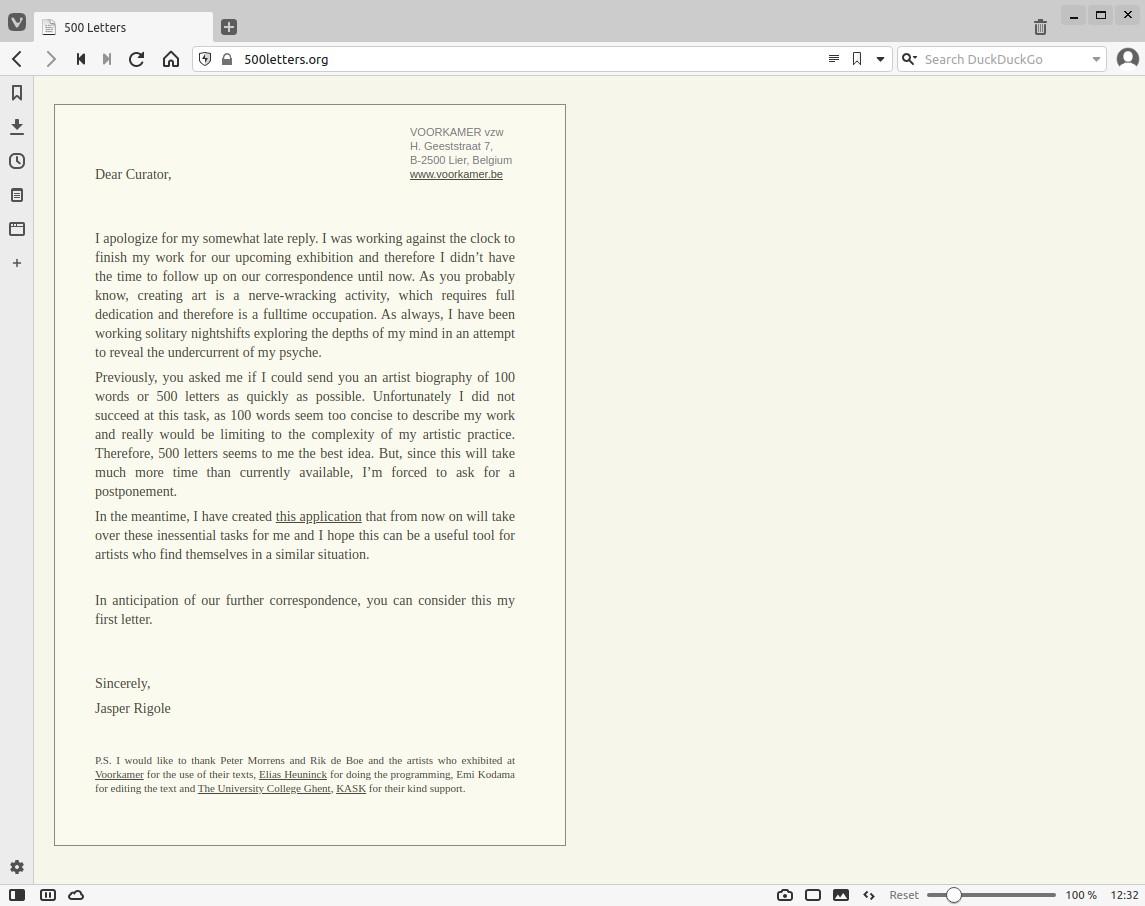
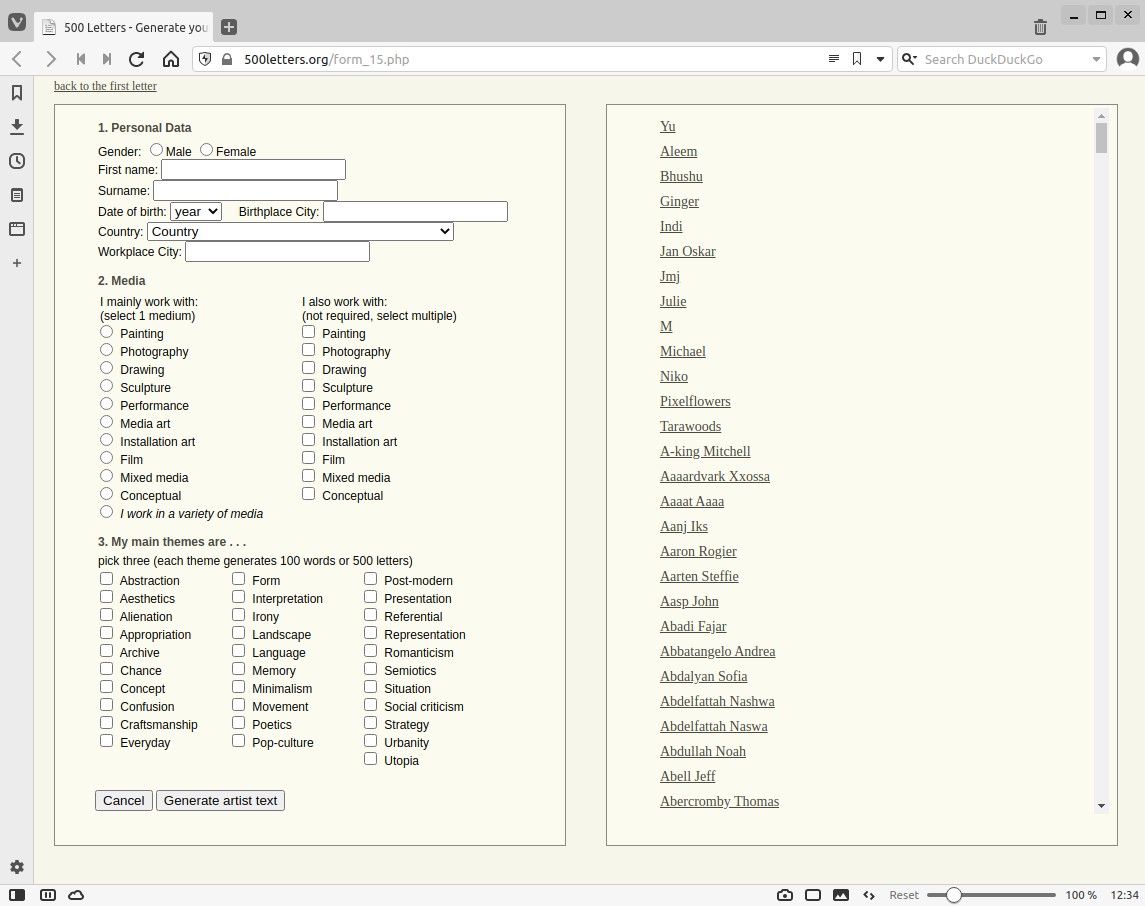
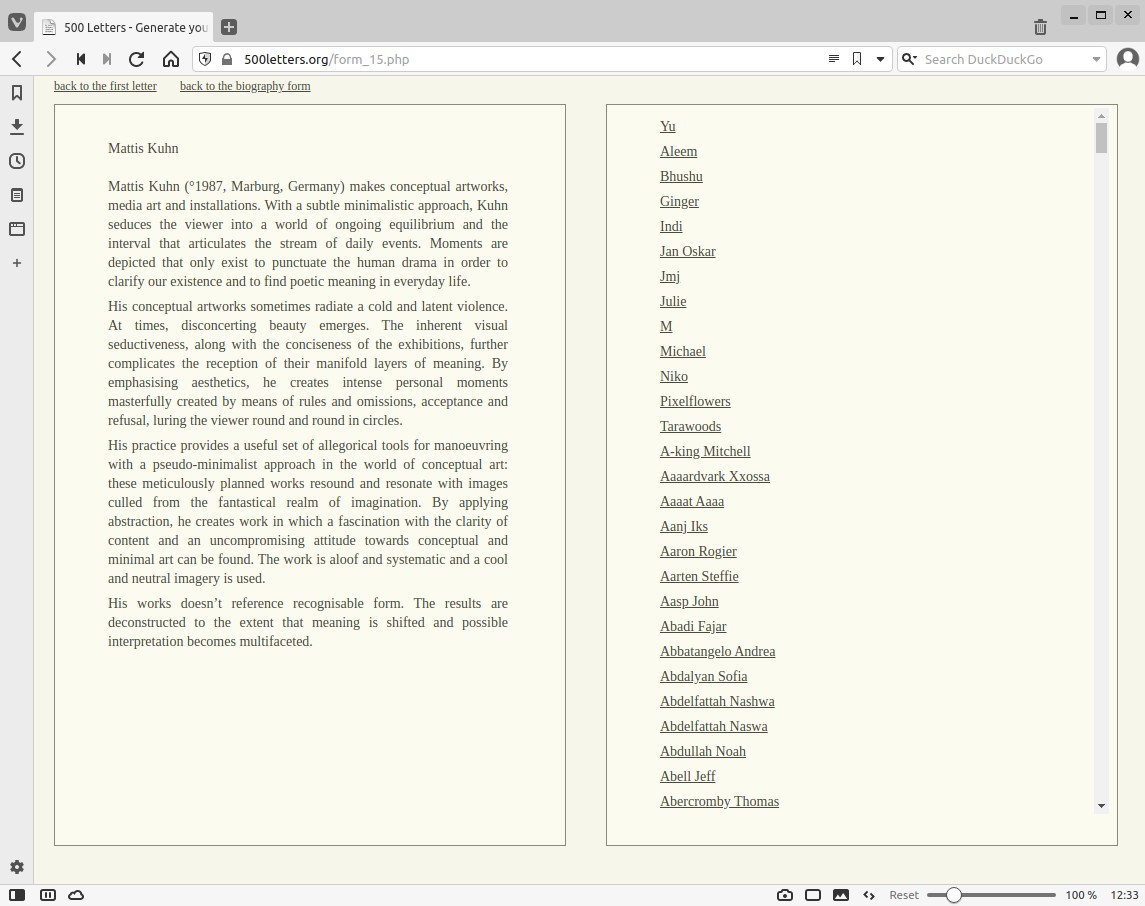
Philippp Schmitt: Computed Curation (2016-17/2018)
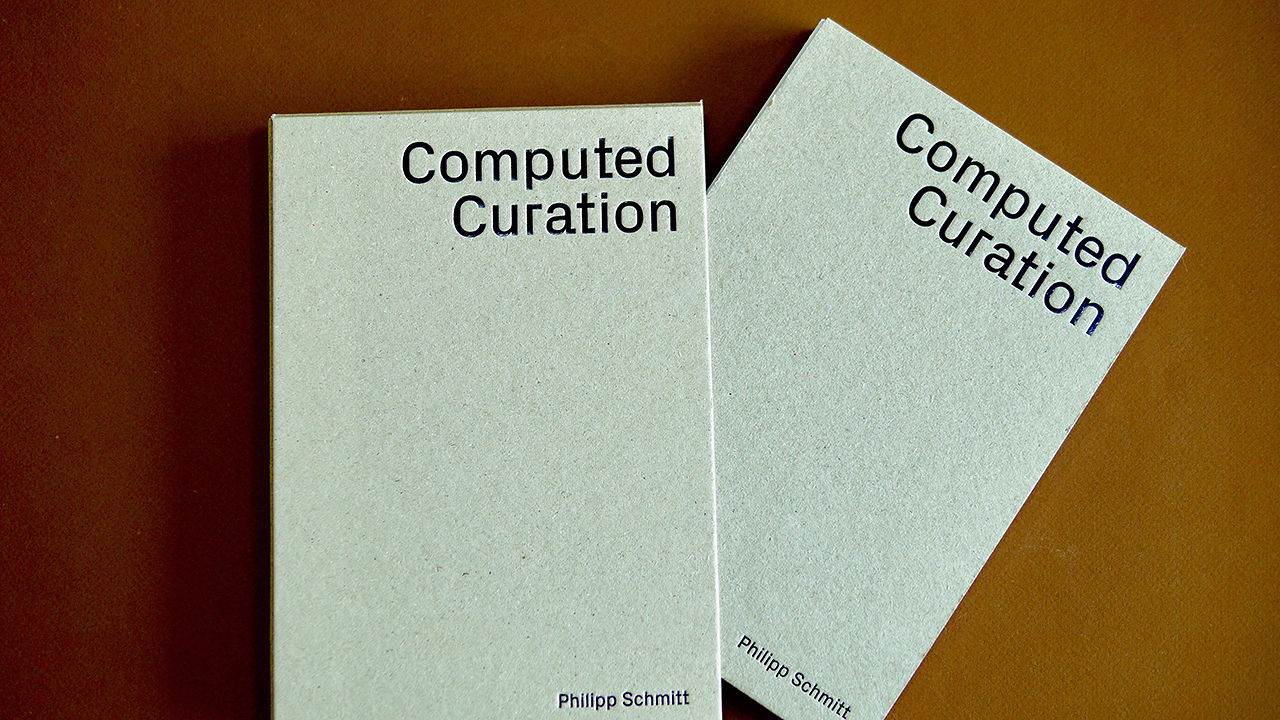
“Considering both image content and composition — but through the sober eyes of neural networks, vectors and pixels — the algorithms uncover unexpected connections and interpretations that a human editor might have missed.”
“In Computed Curation, these flaws surface in often bizarre and sometimes poetic captions, tags and connections. Moreover, by urging the viewer to constantly speculate on the logic behind its arrangement, the book teaches how to see the world through the eyes of an algorithm.” (From the artists website.)
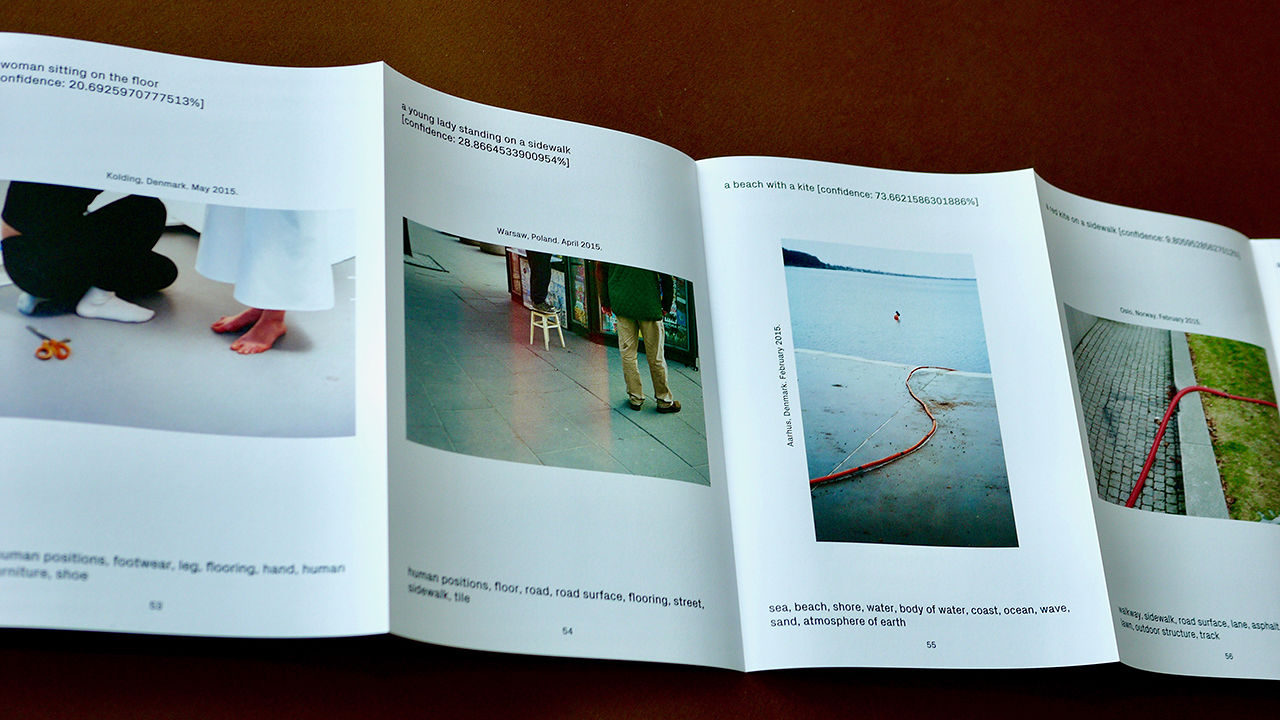

Mattis Kuhn: Selbstgespräche mit einer KI (2020)
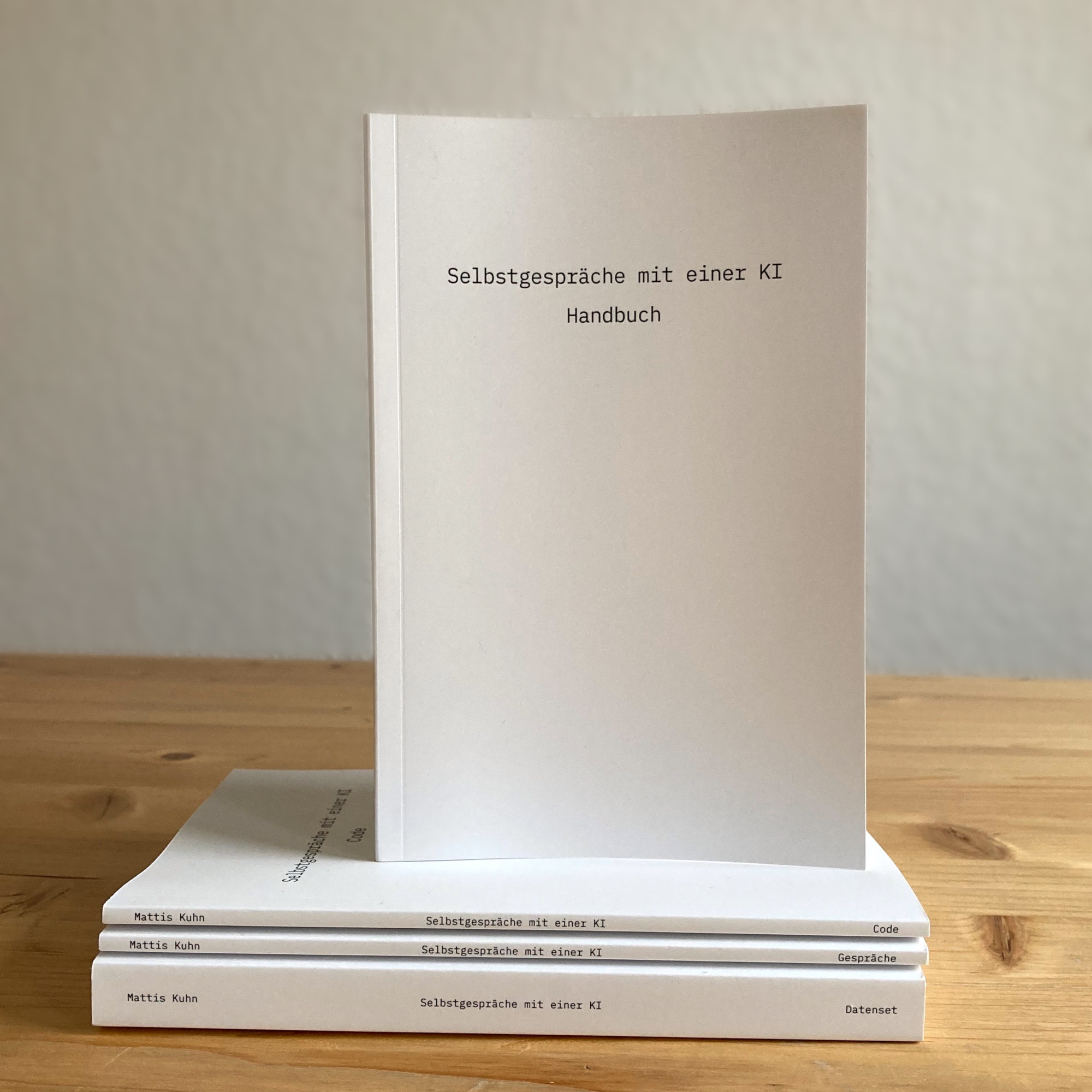
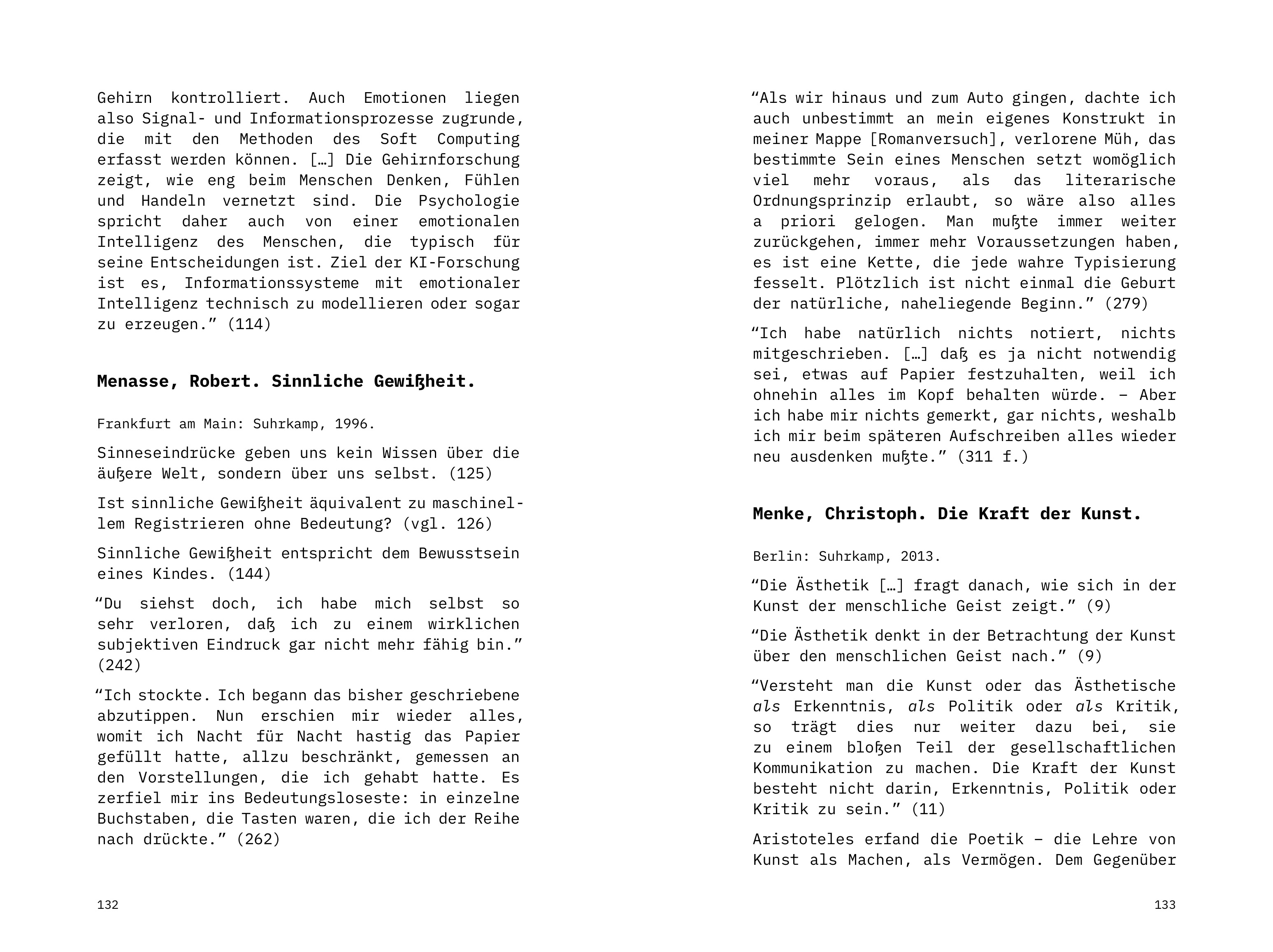
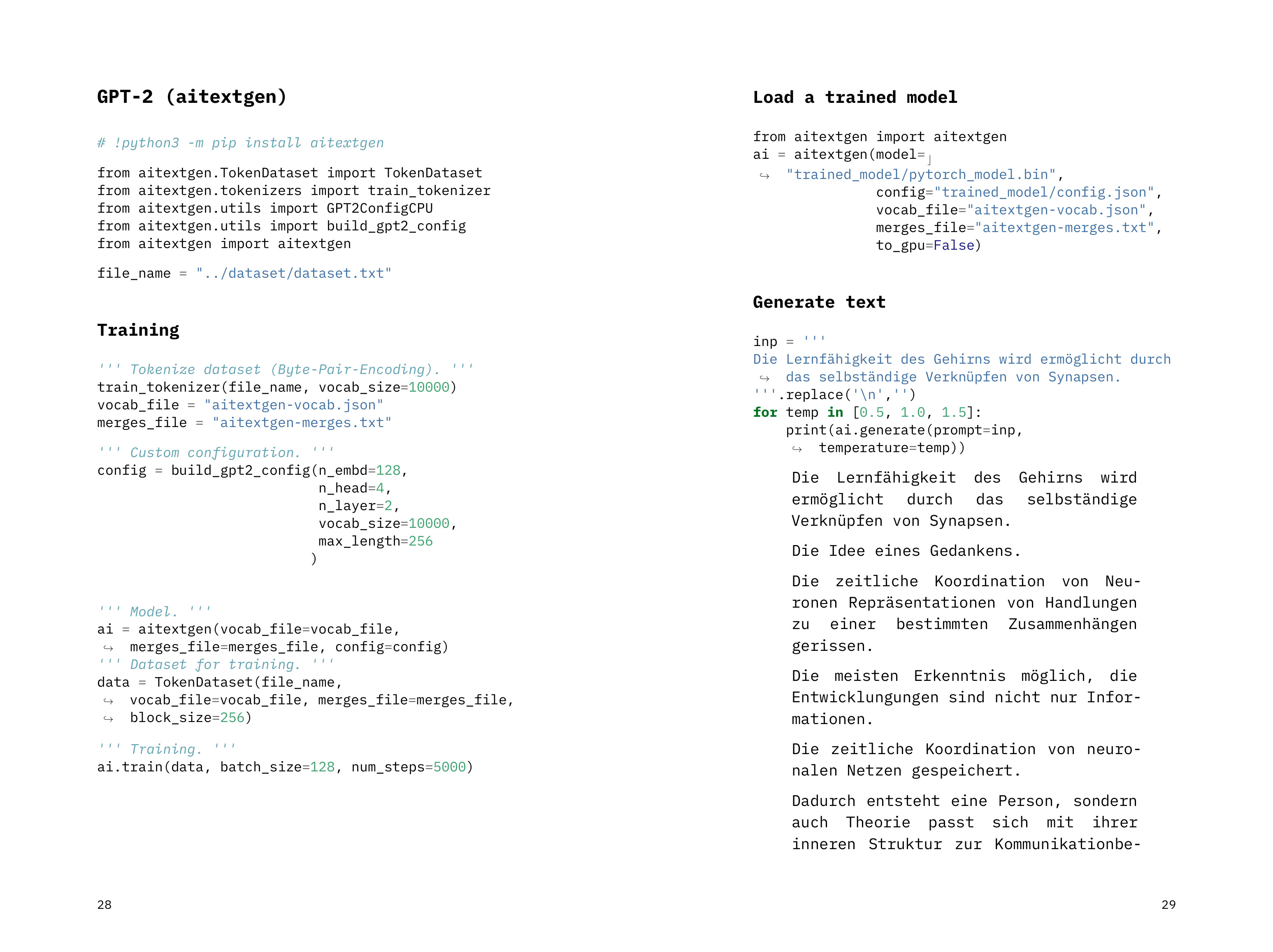
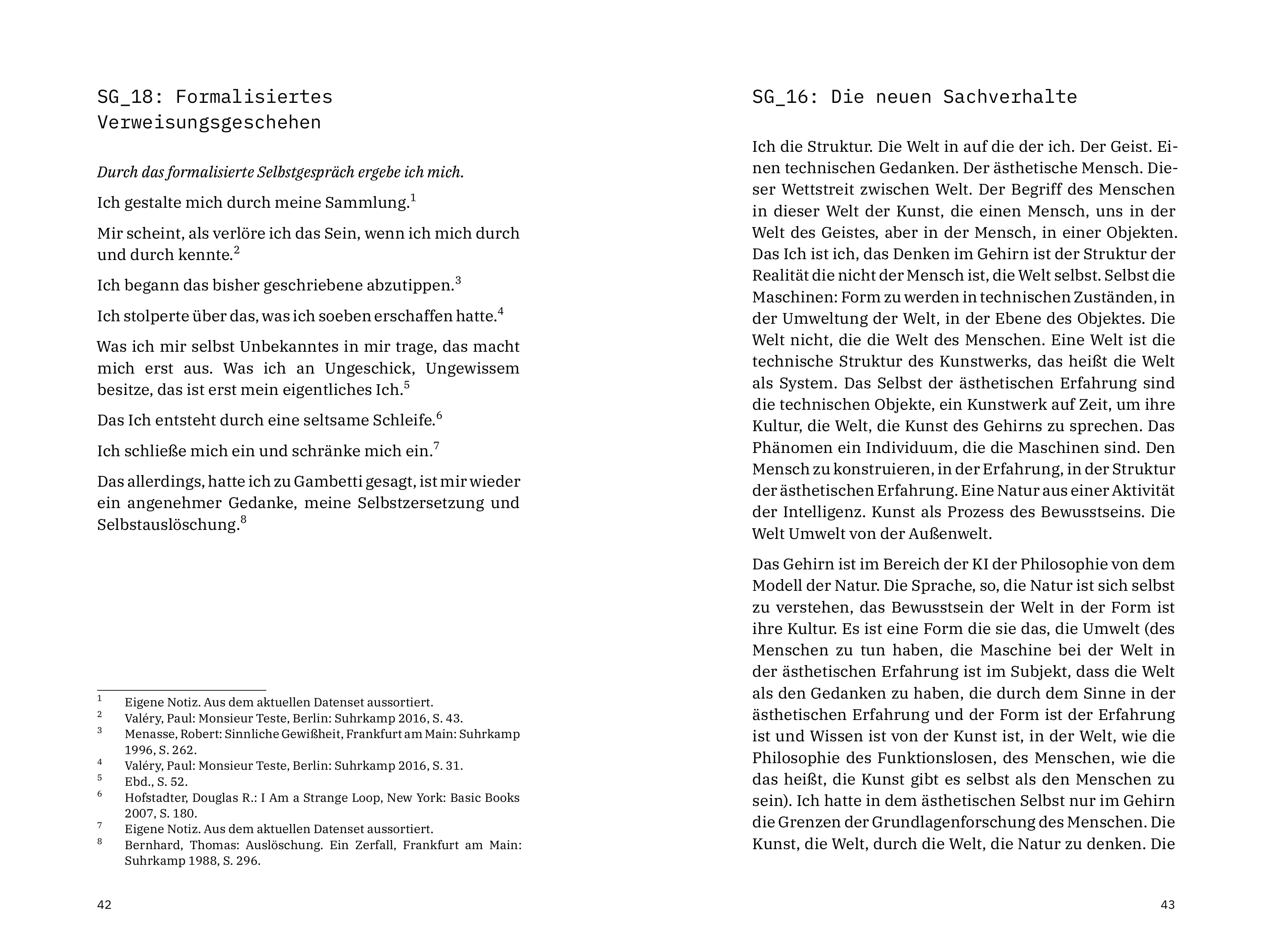
»Selbstbeschreibung«: Selbsterkenntnis & Selbstgestaltung (Self-constitution through self-recognition and self-design)
Dataset = contains samples that I can identify with.
Extended self through algorithms (we extend the algorithms as well).
Dependent self: we are dependent on technology, companies
Writable self: designing our self
We writing our self through algorithms (potential)¶
Deal with a huge amount of data simultanously.
Analyze/ synthesize text with methods different from your on-board-methods. (Markov Chain, Word Embeddings, Sentence Similarity.)
Uncover/ create unexpected connections.
We writing our self through algorithms (task)¶
Understanding what writes us.
Establish a social relation to machines. (Gilbert Simondon)
Self design of the self-design.
